Exhaust System Selector
Enter your details and click "Find Best Exhaust System" to get personalized recommendations.
Ever wondered why some cars sound growly, pull harder, and still pass the smog test? The secret often lies in the exhaust. Picking the right one isn’t about flashy looks alone - it’s a mix of performance, sound, durability, and legality. This guide walks you through every factor you need to consider so you can land on the best exhaust for your ride without guessing.
Key Takeaways
- Identify your primary goal - power, sound, or compliance - before you start shopping.
- Material matters: stainless steel is cheapest, titanium is lightest, aluminized sits in the middle.
- Flow rate (CFM) and pipe diameter directly affect horsepower gains.
- Check fitment charts; a mismatched pipe can cause back‑pressure or rattles.
- Always verify that the exhaust meets your region’s emission standards.
Below is a step‑by‑step process, a quick checklist, and a side‑by‑side table to help you compare the most common exhaust types.
1. Clarify What You Want From an Exhaust
Before you even look at brands, ask yourself three questions:
- Do I want more horsepower or just a deeper tone?
- Will I keep the car street‑legal, or is it a track‑only project?
- What’s my budget?
These answers shape every later decision - from material choice to whether you need a high‑flow catalytic converter.
2. Core Parts of an Exhaust System
Understanding the basic components helps you compare products accurately. The main pieces are:
- Header is the collection of pipes that collect exhaust gases directly from each cylinder. A long‑tube header can boost low‑end torque.
- Muffler reduces noise by forcing gases through chambers and perforated tubes. Different designs (straight‑through vs. chambered) affect sound and flow.
- Catalytic Converter cleans harmful emissions. A high‑flow version retains legality while improving flow.
- Resonator fine‑tunes the exhaust tone and can reduce back‑pressure.
- Exhaust Tip is the visible end piece. It adds style and can slightly affect perceived sound.
3. Material Matters
Most aftermarket exhausts use one of three metals. Here’s how they stack up:
| Material | Weight (lb/ft) | Typical Price Range (USD) | Durability | Sound Character | Performance Gain |
|---|---|---|---|---|---|
| Stainless Steel (304/409) | 0.45 | $150‑$300 | Good - resists rust, lasts 10‑15 yrs | Mid‑range, clean tone | +2‑5hp |
| Titanium | 0.30 | $400‑$800 | Excellent - light, corrosion‑free | Sharp, aggressive | +5‑10hp |
| Aluminized Steel | 0.50 | $100‑$200 | Fair - may oxidize over time | Deeper, muted | +1‑3hp |
If you’re chasing weight savings for track days, titanium is king. For a daily driver where budget matters, stainless steel gives a great balance of durability and performance.
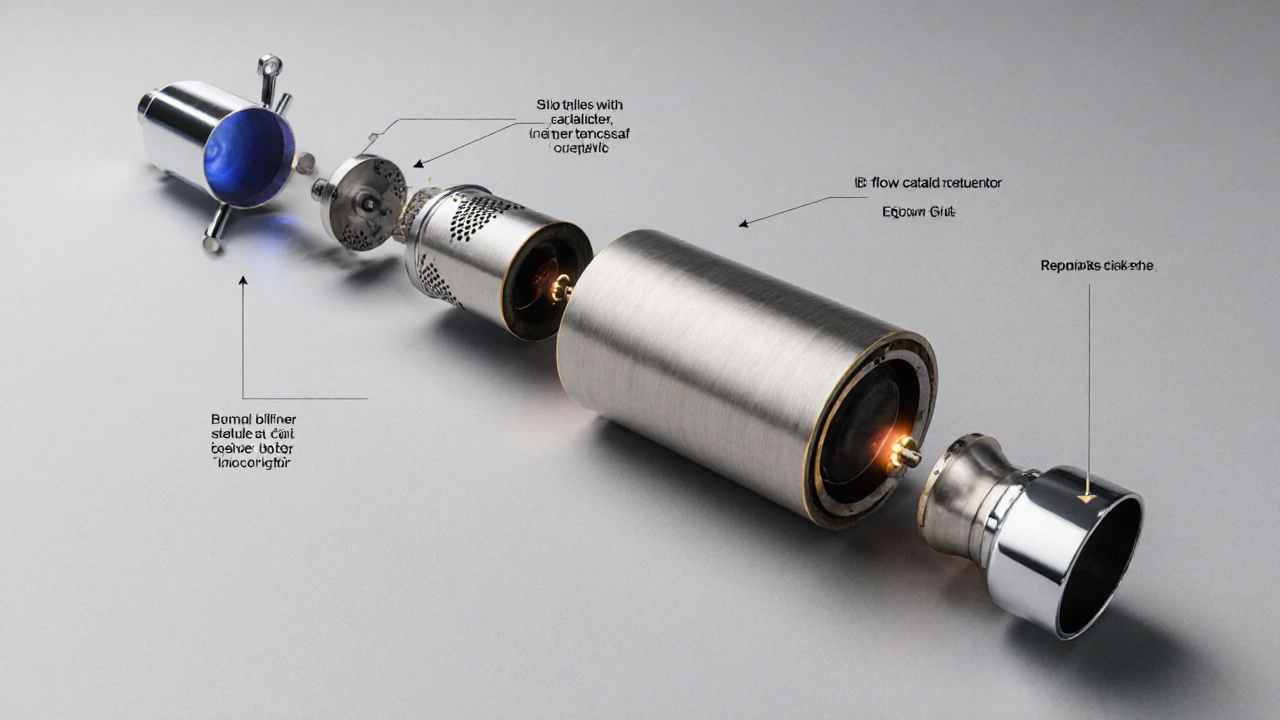
4. Understanding Flow Rate and Pipe Diameter
Exhaust flow is measured in cubic feet per minute (CFM). Bigger pipes (e.g., 2.5‑in) move more air but can reduce low‑rpm torque if the engine isn’t tuned for it. A good rule of thumb: match pipe diameter to engine displacement and power goals.
For a typical 2.0‑liter four‑cylinder:
- Stock: 2.25‑in pipe, ~250CFM
- Performance upgrade: 2.5‑in pipe, ~300‑350CFM, yields ~3‑7hp gain
Remember, flow alone isn’t everything. The design of the muffler and resonator also shapes the pressure curve.
5. Fitment - Don’t Forget the Details
Even the best‑looking exhaust is useless if it doesn’t bolt up correctly. Follow these steps:
- Check the manufacturer’s fitment guide for your exact make, model, and year.
- Look for “universal” kits only if you’re comfortable welding or fabricating.
- Verify clearance around the fuel tank, suspension, and steering components.
- Read user reviews specific to your car - they often reveal hidden fit issues.
Fit errors can cause rattles, exhaust leaks, or even damage to the catalytic converter.
6. Sound Preferences and Legal Limits
Sound is a personal thing, but you also need to stay within local noise regulations. In NewZealand, the maximum allowable exhaust noise for passenger cars is 96dB(A) measured at 7.5m. Most performance mufflers target 85‑92dB, delivering a sporty note without a ticket.
Use the following guide:
- Quiet street ride - chambered mufflers, 2.25‑in pipe.
- Aggressive but legal - straight‑through or turbo‑style mufflers, 2.5‑in pipe.
- Track‑only - no catalytic converter, large diameter (≥3.0‑in), expect >95dB.
7. Emission Standards - Stay Street‑Legal
Even if you love raw power, you can’t ignore emissions. Most regions, including NewZealand, require a functioning catalytic converter that meets Euro5 or Euro6 standards.
When evaluating an exhaust, ask:
- Is the catalytic converter OEM‑spec or high‑flow?
- Does the product have a certification mark (e.g., SVA, CARB)?
- Will the exhaust pass a dynamometer emission test?
A high‑flow cat can give a modest 2‑4hp boost while staying compliant.
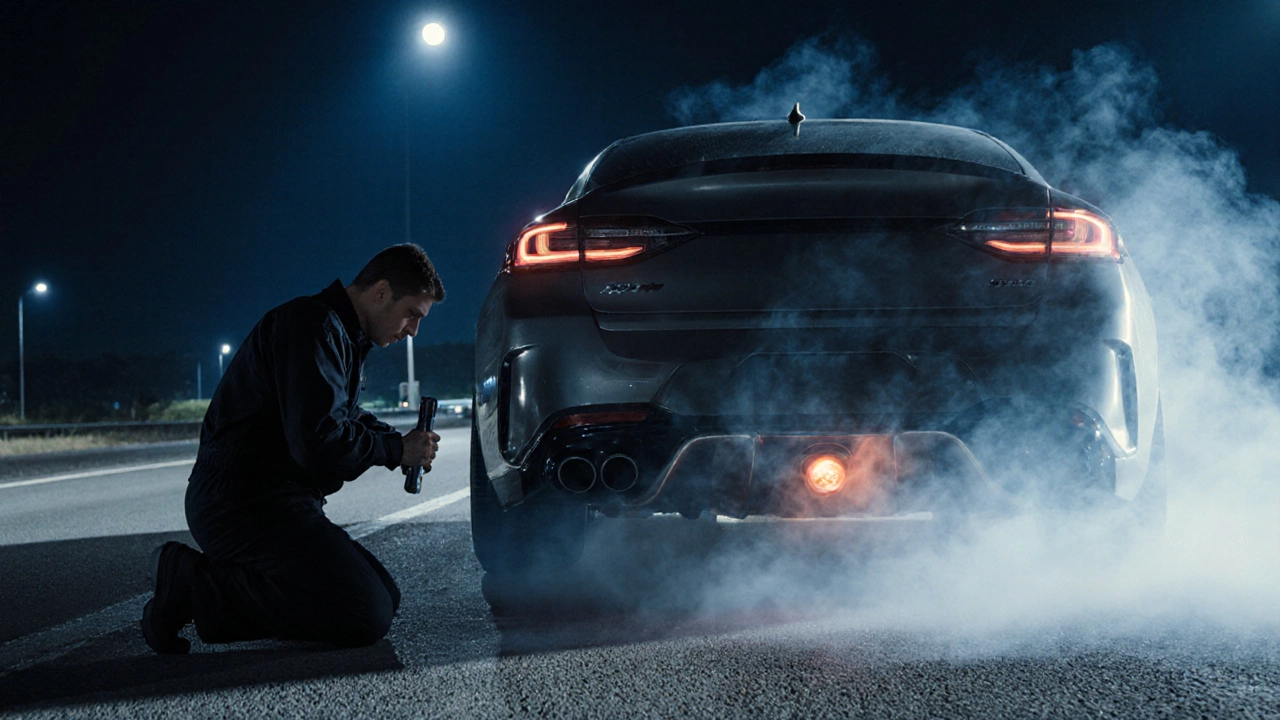
8. Budget Breakdown
Here’s a realistic price map for a typical 4‑cylinder upgrade:
- Entry‑level stainless steel kit (muffler + pipe) - $200‑$350.
- Mid‑range stainless plus high‑flow cat - $400‑$600.
- Premium titanium + custom header - $800‑$1,200.
Don’t forget installation costs - a professional install can add $100‑$300, though many DIYers with basic tools can handle a bolt‑on kit in a weekend.
Quick Decision Checklist
- Goal defined (power, sound, look, compliance)?
- Material chosen (stainless, titanium, aluminized)?
- Pipe diameter matches engine size and power aim?
- Fitment verified for your exact model?
- Noise level within local legal limit?
- Catalytic converter meets emission standards?
- Budget aligned with expected total cost?
If you tick every box, you’re ready to buy with confidence.
Next Steps and Common Pitfalls
Even after purchasing, a few things can go sideways:
- Pitfall: Ignoring the need for a new heat‑shield, leading to under‑hood heat damage. Solution: Replace or add a stainless heat‑shield.
- Pitfall: Over‑sizing the pipe without proper ECU tuning, causing a dip in low‑rpm torque. Solution: Have the ECU remapped or stick to the recommended diameter.
- Pitfall: Forgetting to torque bolts to spec, resulting in leaks. Solution: Use a torque wrench (typically 30‑40Nm for exhaust clamps).
Address these early, and you’ll enjoy smoother power delivery and a soundtrack you can be proud of.
Frequently Asked Questions
Will a stainless steel exhaust improve my car's horsepower?
Yes, but the gain is modest. A well‑designed stainless steel slip‑on kit typically adds 2‑5hp by reducing back‑pressure. Bigger gains require matching headers, a high‑flow cat, and proper tuning.
Is a titanium exhaust legal for street use in NewZealand?
Titanium itself is fine, but the overall system must still meet noise (≤96dB) and emission standards. Choose a titanium kit that includes a certified catalytic converter and a muffler rated for street noise.
Do I need to re‑program my ECU after installing a performance exhaust?
If you only swap a slip‑on muffler and keep the factory cat, most drivers can go without a tune. However, larger diameter pipes or a high‑flow cat usually benefit from an ECU remap to optimize fuel and timing.
How often should I inspect my exhaust for rust?
Inspect the system at least twice a year, especially after harsh winters or if you live near the coast. Look for bubbling, flaking paint, or rattling noises that indicate corrosion.
Can I install an exhaust myself, or should I pay a mechanic?
Bolt‑on kits are designed for DIY installation with basic hand tools. If you need to cut, weld, or fabricate mounting brackets, a professional mechanic is recommended to ensure safety and proper alignment.
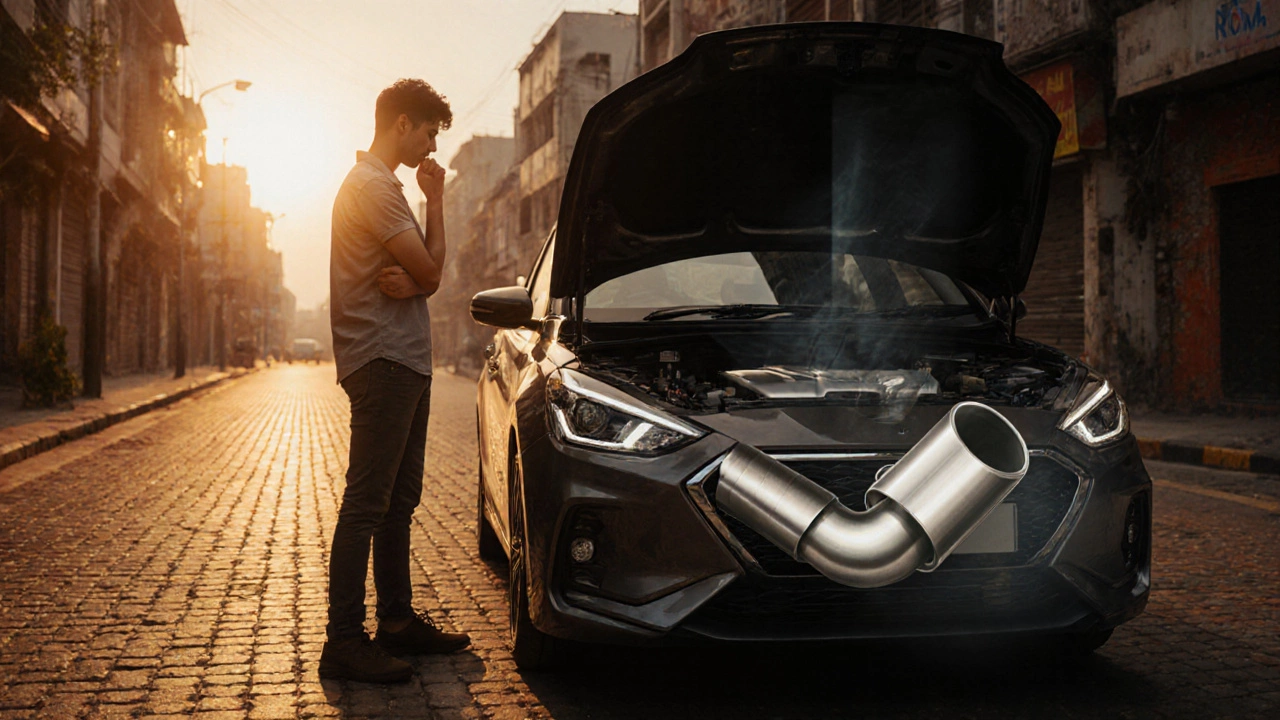
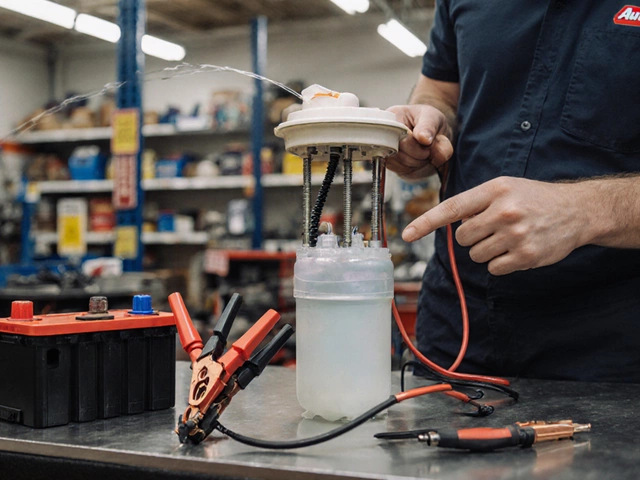


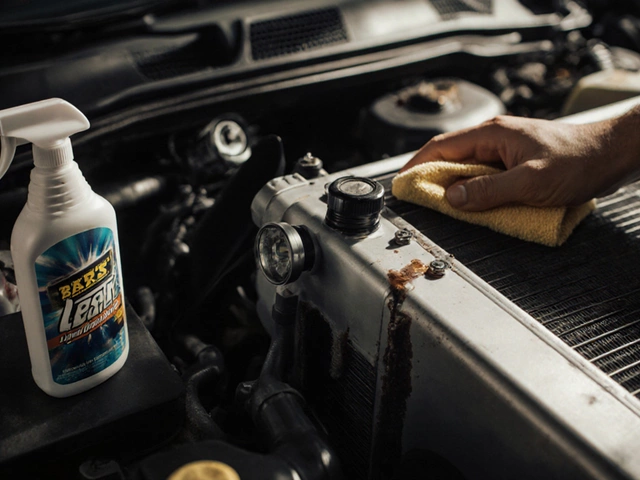
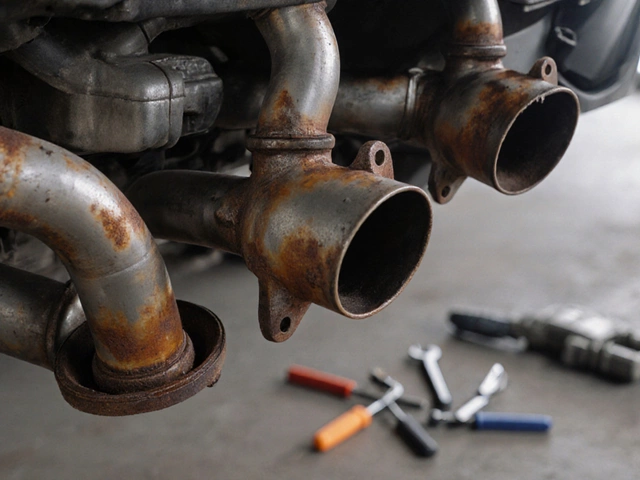
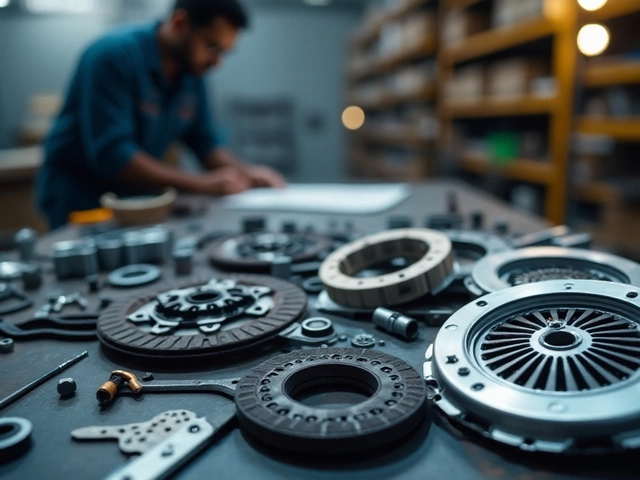


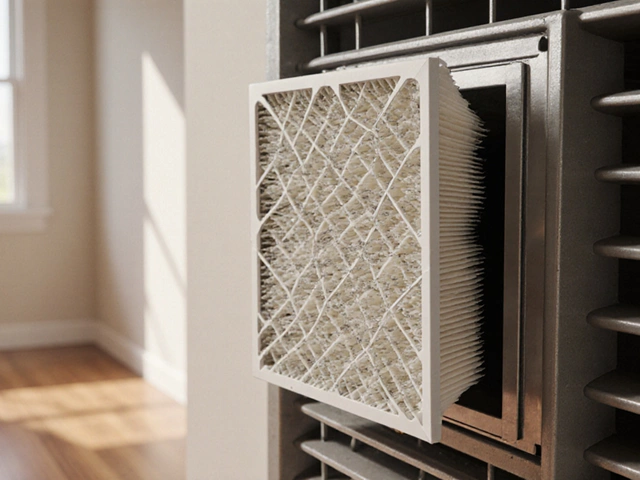

Write a comment